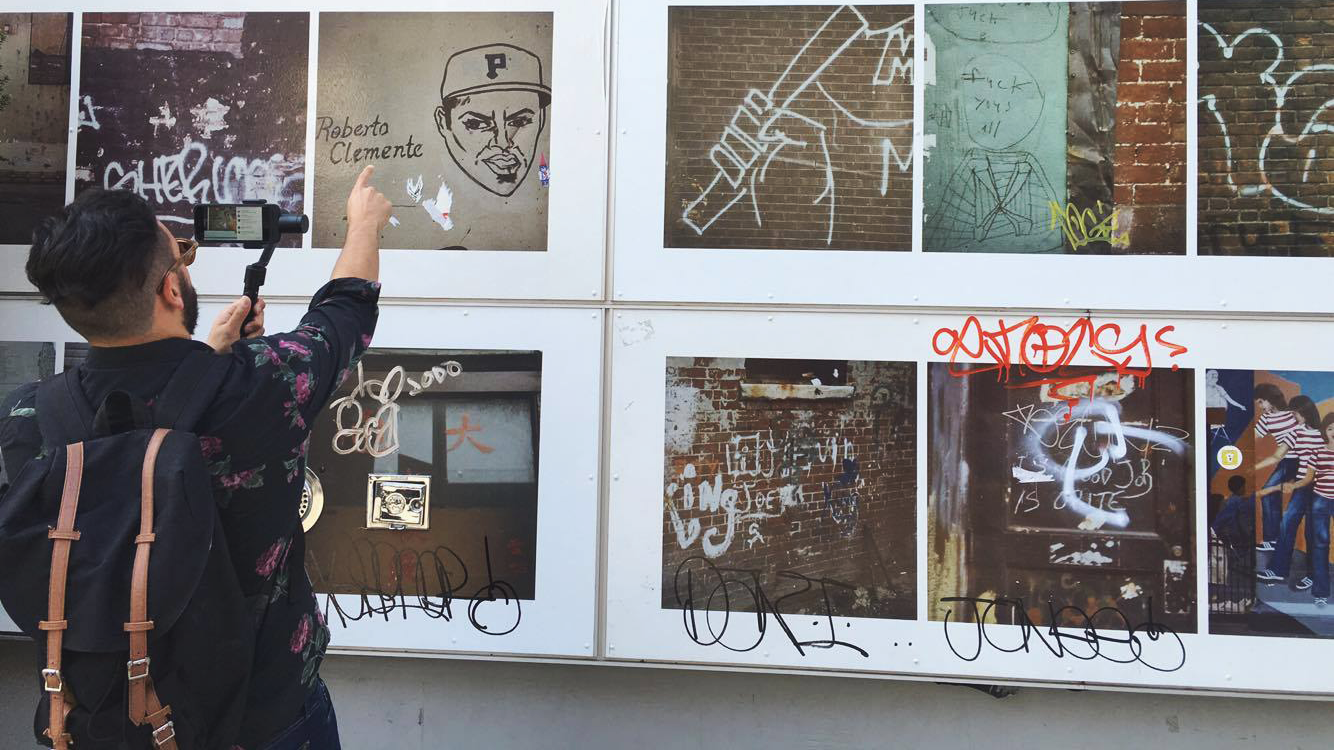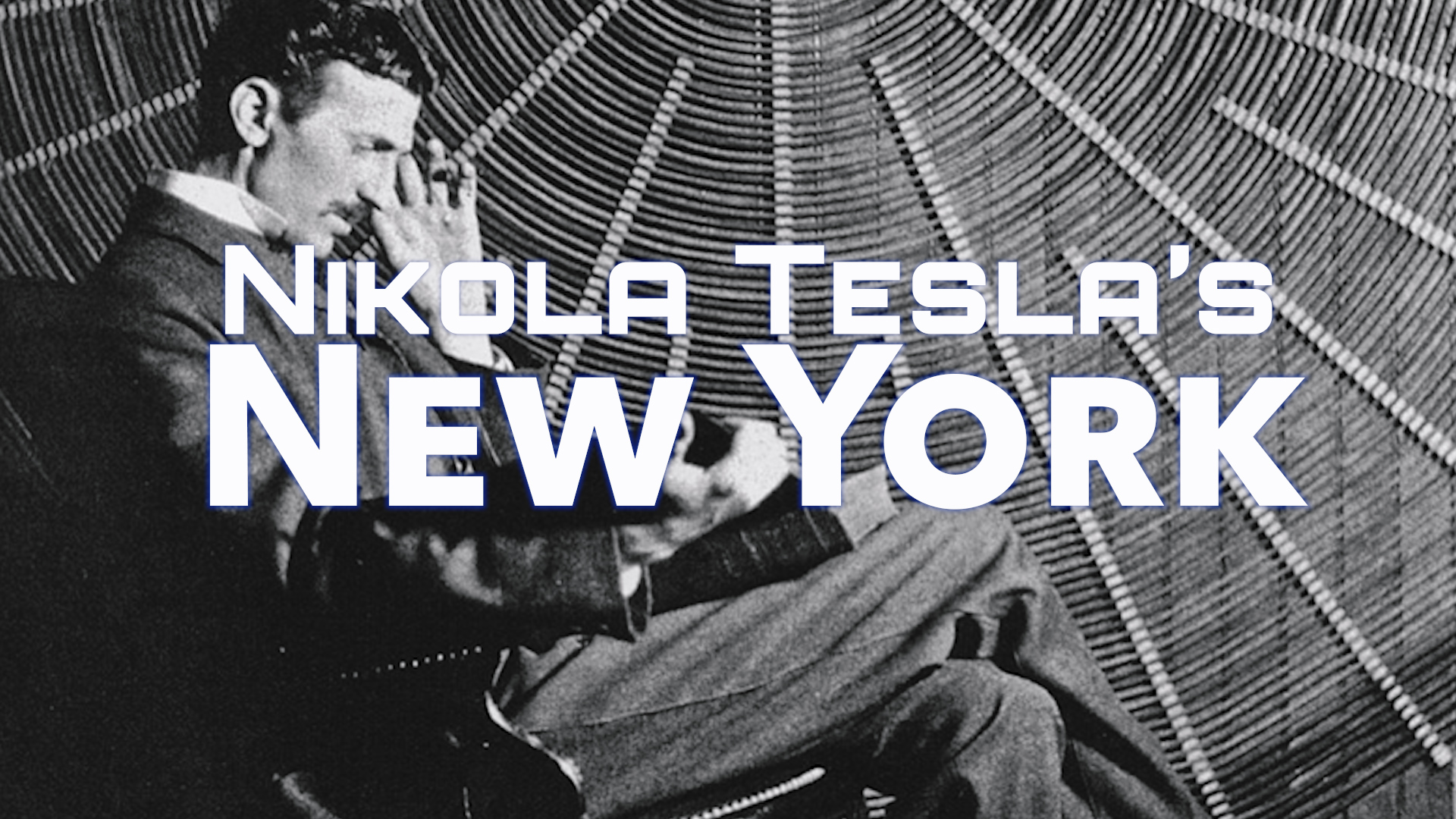When I say architecture in New York City, what do you think about?
The office towers rising towards the skies? Big, blocky, monolithic. The new super-slender glass giants casting mile-long shadows on Central Park? Or is it the The Empire State Building, the Chrysler, and Rockefeller Center? All iconic. In countless postcards and instagrams.
However there is more to architecture in the big apple than a magnificent buildings like the Flatiron. Let’s take a journey through a selection of the 8 most unique buildings in Manhattan. Both classical and modern.
455 Central Park
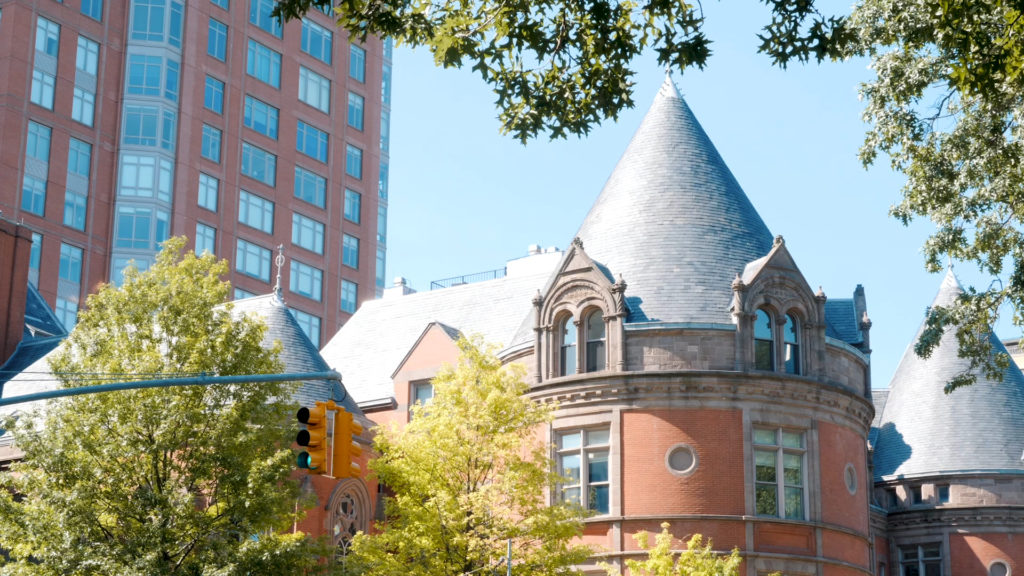
Address: 455 Central Park West New York, NY 10025
Wait a minute there’s a castle along Central Park?
Yes there is and it’s built like a French Chateau with five turrets that contain perfectly circular rooms of about 40 feet in diameter, a giant smoke stack, arch windows, and a grand entrance.
However this was never a mansion for a black-suit-white-cravat-dressed New York aristocrat. This was built by Charles Haight in 1887 as America’s first ever Cancer Hospital. Its luxurious design was meant to lure in wealthy patrons to keep the hospital afloat.
At first it worked, gaining the patronage of industrialists such as John Jacob Astor III. The perfectly circular turrets were built because at the time the medical field believed that corners and uneven ventilation could harbor disease. Medical professional also weren’t sure if cancer was contagious or not.
Under the bellowing smokestack—which was used to burn the bodies of the deceased—the French Chateau along Central Park West started feeling more like a French prison. Thus gaining the nickname The Bastille. The hospital struggled to keep running and in 1939 this location was shutdown.
But in New York City, no overly extravagant Gilded Age buildings stays vacant for too long… In 2005 the former New York Cancer Hospital became the condominiums at 455 Central Park West with units selling for more than $7 million!
The Ansonia
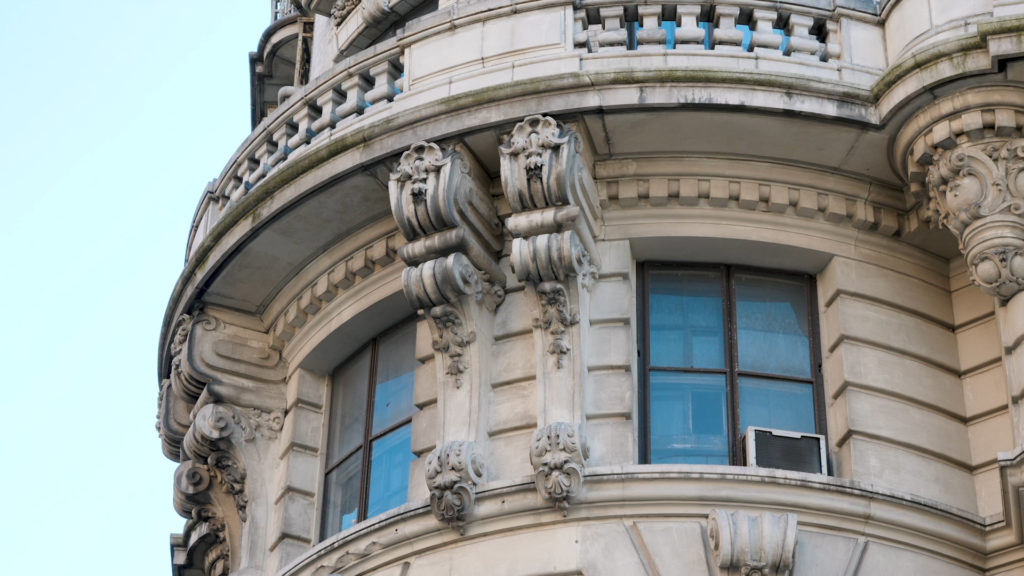
Address: 2109 Broadway, New York, NY 10023
No, we are not in Paris.
In 1904 The Ansonia opened as the largest hotel in the world, located on Broadway & 73rd Street and designed by Paul E.M. Duboy.
This is one of New York City’s many beaux-arts buildings, which was a school of architecture that started in École des Beaux-Arts in Paris. It came into prominence during the America’s Gilded Age when wealth was flooding the nation after the Civil War. With the country generating more millionaires than ever before, followed extravagance in every facet of public life, especially in the architecture.
Three thousand rooms, giant bay windows facing the growing skyline, a Mansard roof, round corner towers, and demonic beings sculpted onto the facade providing protection for some of the most notable figures in history. Celebrities like Babe Ruth, Enrico Caruso, and Igor Stravinsky have called The Ansonia home.
However in the late 1970s, as New York City experience economic collapse, the hotel took a turn into seedy territory. It became the infamous Plato’s Retreat. A swinger sex club known for orgies and cocaine-fueled dance parties.
Now, the Ansonia is one of the most sought out apartments in a rapidly rising New York. Standing as a reminder of the extravagance of the Gilded Age where steel and stone met to make buildings filled with personality.
Hearst Tower
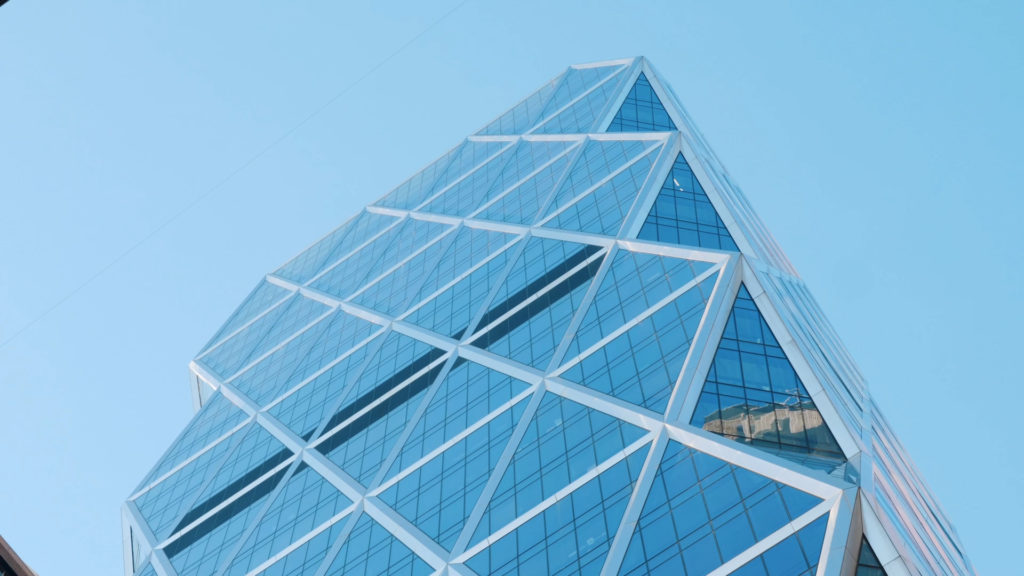
Address: 300 W 57th St, New York, NY 10019
In New York City the classical and modern co-exist together. Standing side-by-side, making this city feel vibrant. Both with a long history and a bright future. Unlike many of the famous cities in Europe which are frozen in time, New York is still growing and pushing the envelope with architecture.
However the Hearst Tower located at 57th Street & Eight Avenue combines the old with the new. The first six floors were commissioned by William Randolph Hearst, a ruthless media publisher who served as the main inspiration for Citizen Kane. Built
in 1928 and designed by Joseph Urban, this cast stone facade was meant to be the base of a skyscraper. But the Great Depression put a stop to those plans.
Zoom ahead to 2006. Renowned British architect Norman Foster hollows out this landmark building and constructs the first certified LEED Gold high-rise building in New York City. 46 stories tall. The building has utilizes an unusual triangular framing pattern known as a diagrid. Resulting in 20% less steel than a normal structure.
Another peculiar aspect of this framing patter is that the corners of the building are receded inside, allowing for maximum natural light to stream in.
The Hearst Tower continues to be the headquarters for Hearst Media with more than 2,000 employees occupying its offices. The old married with the new. What a wonderful combination!
Silver Towers
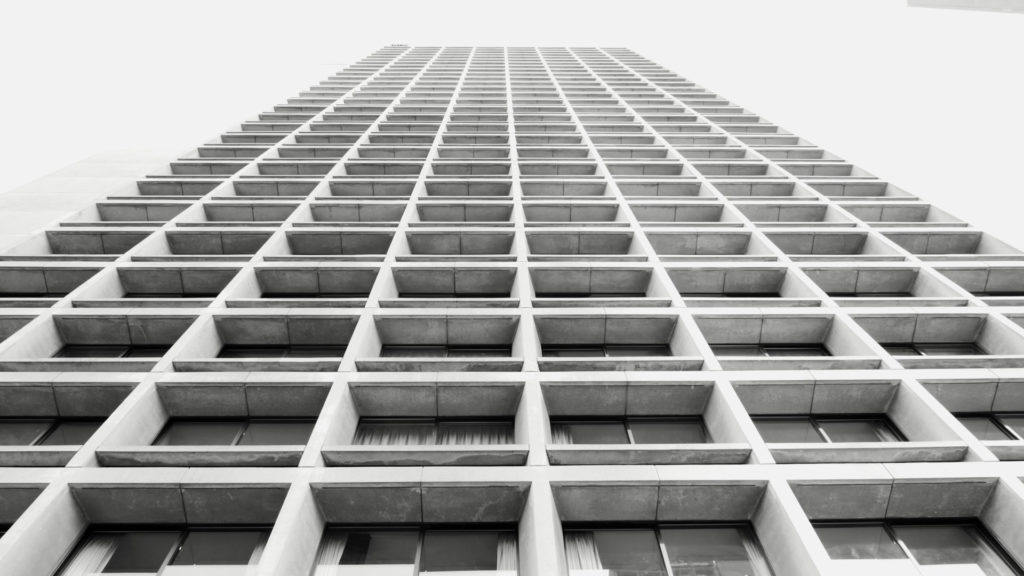
Address: 110 Bleecker St. New York, NY 10012
In 1967 I. M. Pei & James Ingo Freed built these three 30-story towers in the mostly low-rise Greenwich Village. A sculpture serves as its centerpiece called Bust of Sylvette created by Carl Nesjär and Pablo Picasso.
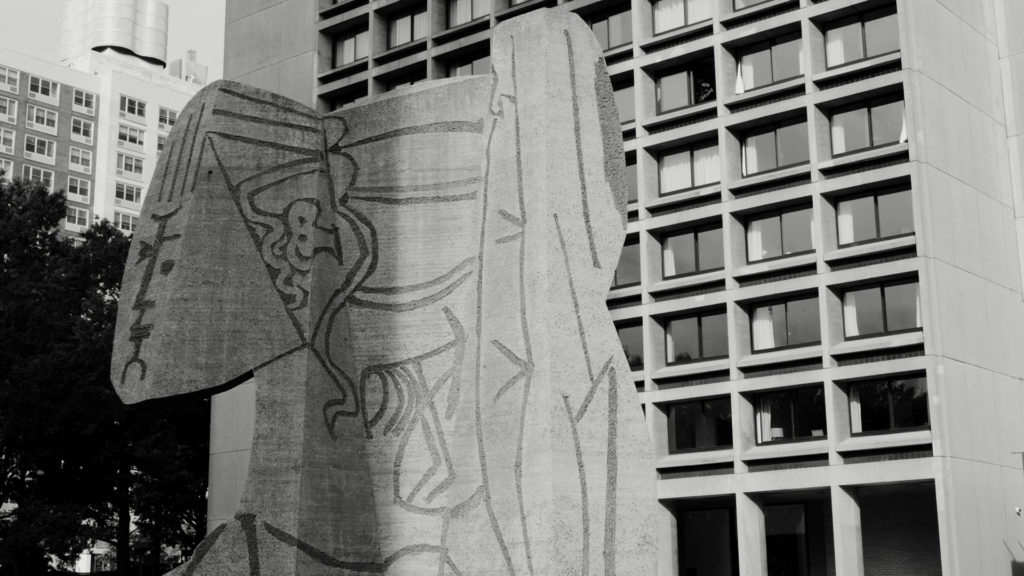
This type of architecture is called Brutalism. It’s a sharp contrast from the ornamental Beaux-Arts architecture. Vying instead for geometric design and bare concrete.
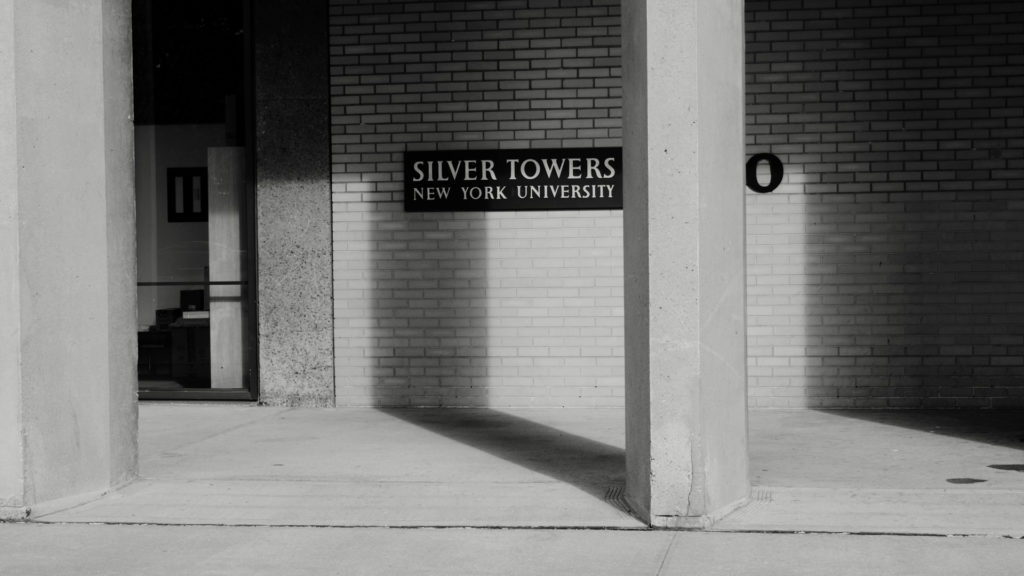
Buildings like these aren’t pretending to be anything. They are clean slates in a previously ostentatious cityscape. Raw, honest, and did I mention beautiful in black & white? Especially when the sunlight hits directly upon the windows that are deeply recessed into the load-bearing grids of four by eight bays.
All surrounded by a 22-foot-wide blank concrete sheer wall. The towers were positioned to maximize views of the surrounding skyline and away from the surrounding streets to reduce noise.
However an equally controversial building of a very different style is only a 20 minute walk away to the West Village…
Palazzo Chupi
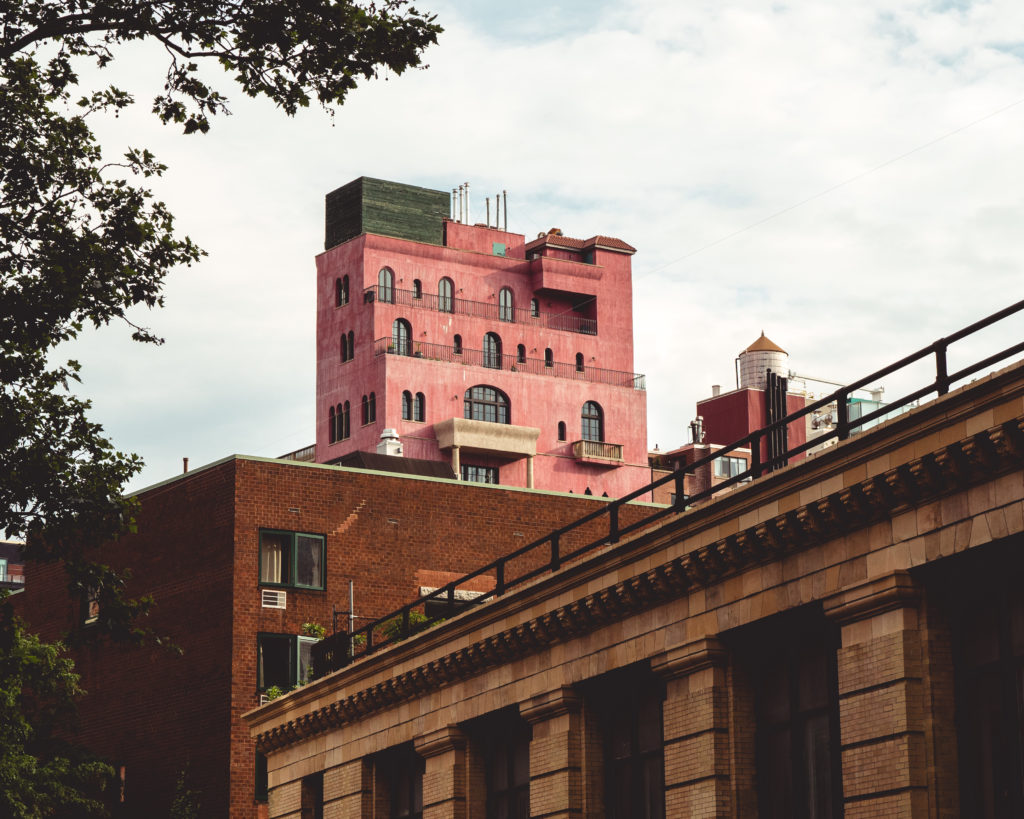
Address: 360 W 11th St, New York, NY 10014
In 1987 artist and filmmaker Julian Schnabel was introduced to a three-story building in the far West Village which was originally built as horse stables. He immediately fell in love and purchased it for $2.2 million. The space was cavernous, perfect for rearranging its layout according to his artistic needs.
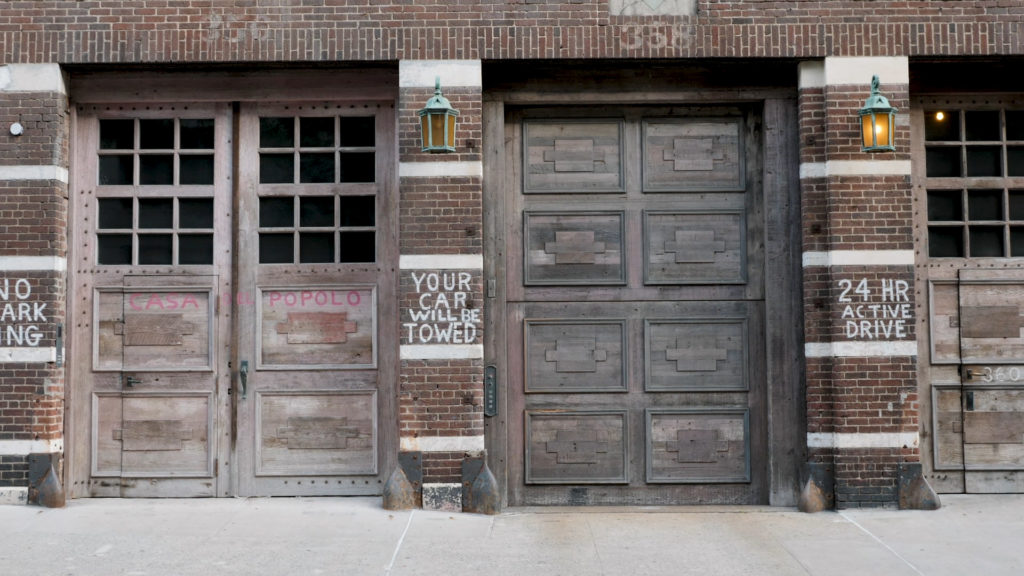
However in 2005 Schnabel started construction on turning this humble former stables into a grand Venetian Palazzo. The building keep rising higher and higher reaching five grand palazzos donned in a bold pink color!
The palazzo’s height exceeded most of the surrounding buildings and the style was wildly different from the Greek-revival townhouse and cast-iron industrial buildings. Thus infuriating many members of the community and resorted to protest the construction.
Despite constant backlash, the Palazzo Chupi was completed. Named after the pet name Julian Schnabel has for his wife Olatz López Garmendia, based on the Spanish lollipops “Chupa chups”.
Today the palazzos sell between $15-32 million! Afterwards strict height limits were legally enforced in the neighborhood, making this Venetian palace that was born out of the mind of a mad genius a unique sight for the foreseeable future.
41 Cooper Square
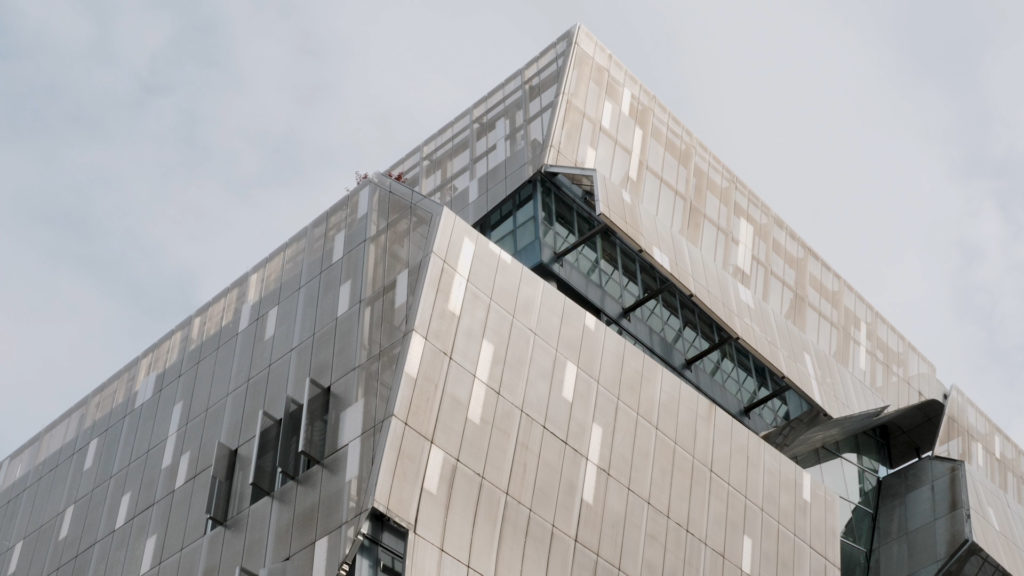
Address: 41 Cooper Sq, New York, NY 10003
On the other side of the Village is a breath of fresh air, a building that elegantly curves above the constant stream of pedestrians.
Designed by Thom Mayne this is the grand expansion for one of the most prestigious architecture and art universities in the nation: Cooper Union. A 150 year-old institution. Its main building situated across the street represents the university’s past, and this 41 Cooper Square is its future.
The exterior is composed of a semi-transparent layer of perforated stainless steel that provides cooling during the humid summers and retains heat during the harsh winters.
One end of the building is more geometric and as you stroll along this temple of learning, the building transitions to being more interpretative.
The middle section–that is open to the elements–is the atrium where natural sunlight spills in. Making this building the most forward-thinking and environmentally-friendly design for any learning institution in New York.
56 Leonard; or better known as The Jenga Building
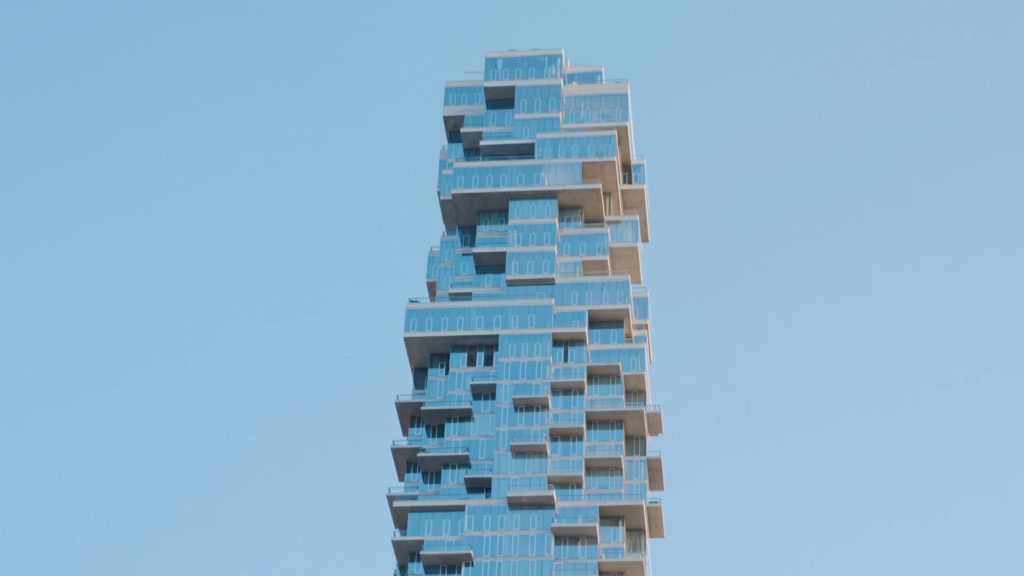
Address: 56 Leonard St, New York, NY 10013
This building may bring anxiety to many. The floors at the very top cantilevering up to 20 feet! A criss-cross of glass and concrete with no-two concrete slabs being the same dimensions.
Hence why this residential skyscraper has been dubbed the Jenga Building. Named after the popular game where the person who causes a tower of wooden blocks to falls, loses.
However this building stands in a plot where height restrictions were exempted, granting this building unbeatable views of Lower Manhattan. It has a width-to-height ratio of 1:10! Making it one of the first buildings to kickstart the super-skinny skyscraper movement.
Designed by the Swiss architecture firm Herzog & de Meuron, there are only 145 apartments ranging from $3.5 million for a studio up to $50 million for the penthouse!
AT&T Long Lines Building
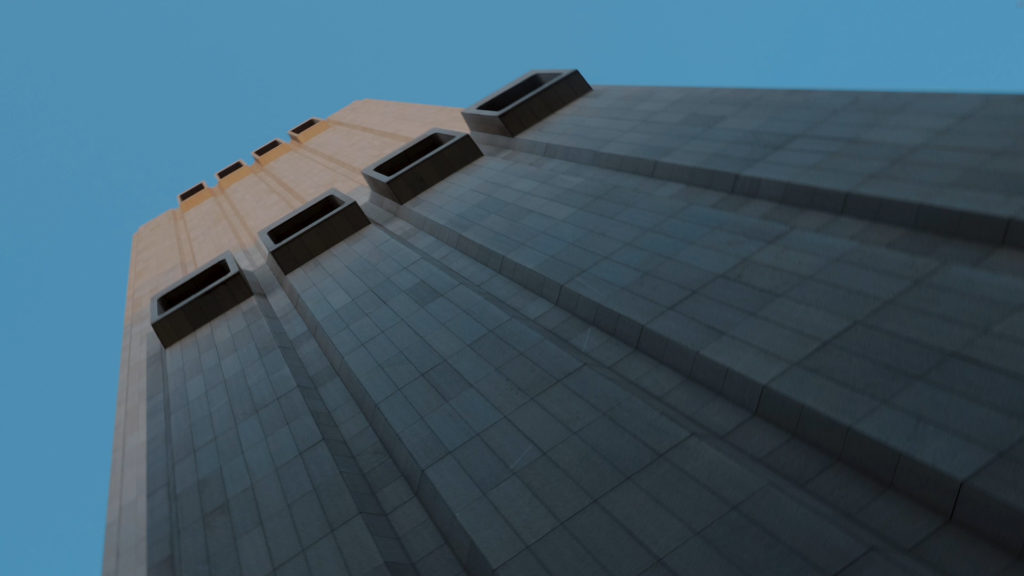
Address: 33 Thomas St, New York, NY 10007
Last but not least, a building unlike any other in New York City…
29 stories, 550 feet tall, and mostly devoid of windows.
This building is so mysterious that world-famous actor Tom Hanks once tweeted:
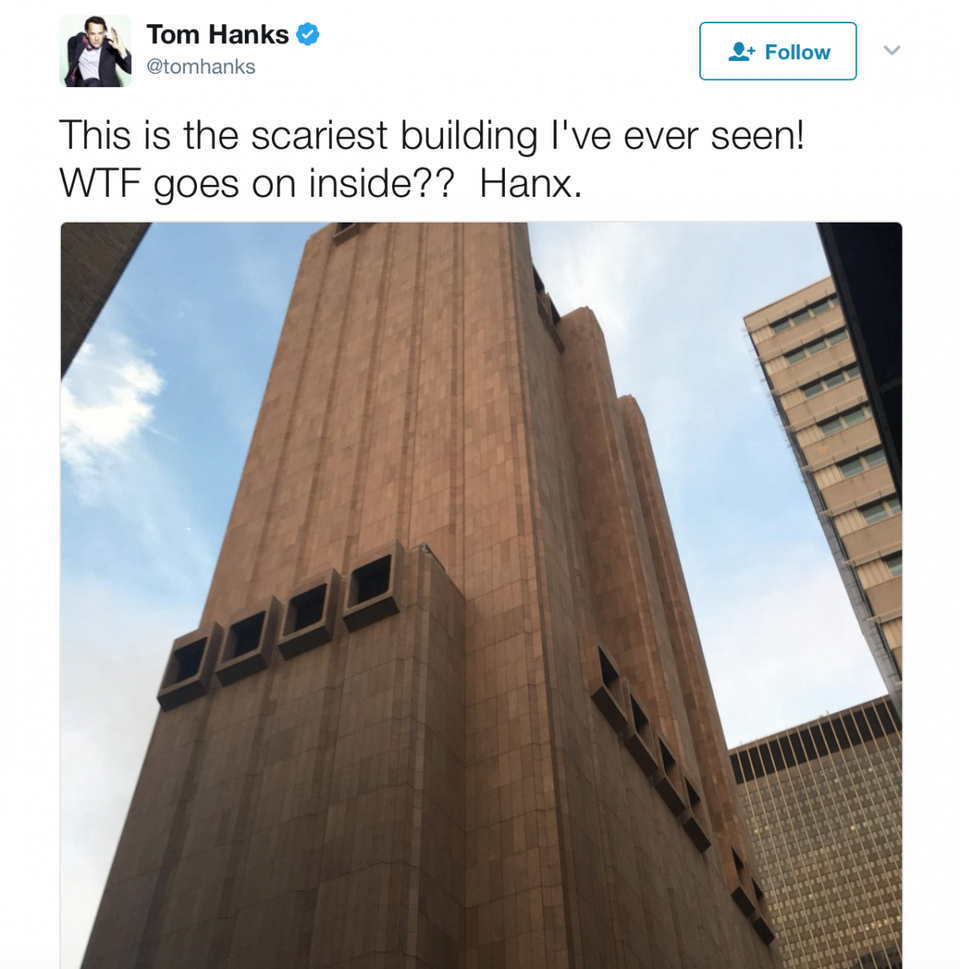
The AT&T Long Lines Building was designed by John Carl Warnecke in 1974 as “a skyscraper to be inhabited by machines.” Warnecke was mostly known for designing John F. Kennedy’s gravesite and United States Naval Academy building.
Its massive slabs of flame-treated Swedish red granite giving nothing away about what lurks inside. Officially this is a high-security data complex with rows of servers, large cooling systems to keep those servers from burning out, and switchboards.
However according to the original plans for this building dubbed “Project X” the walls are reinforced to sustain a nuclear blast. The basement contains a fallout shelter with enough supplies to sustain 1,500 people through nuclear fallout.
But things get more interesting in this building that disappears into the dark with no windows to show twinkling lights in the night…
Back in 2013 the classified National Security Agency documents leaked by Edward Snowden revealed that this building codenamed TITANPOINTE was being used by the NSA to conduct surveillance on countless calls routed between the US and the rest of the world. Which resulted in a massive public outrage for AT&T–the current owner of this complex–and other similar companies for aiding the US government in illegal spying on its citizens.
Nonetheless this building blends into the skyline, not usually noticed by neither tourists nor locals alike. On the 10th and 29th floors there are a series of large protruding ventilation openings. Standing ominously as the most secure high-rise in all of America.
In conclusion, when you’re in New York City, be sure to look up. You never know what strange architectural wonders you’ll see. Always look up.
Watch the full video on the Urbanist: History of Cities Youtube channel:



